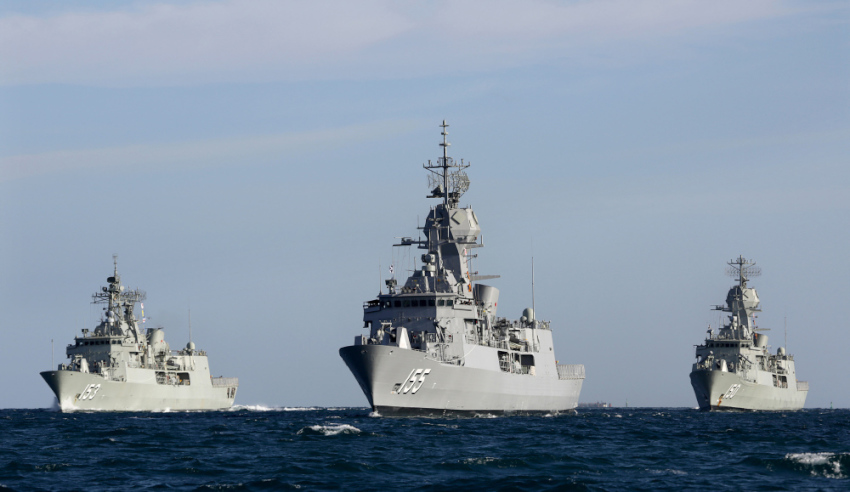Five years into the Anzac frigate project, there were some signs that all was not well, with ships one and two running behind schedule.
To continue reading the rest of this article, please log in.
Create free account to get unlimited news articles and more!
These were to be lead ship HMAS Anzac for the Royal Australian Navy, running 6 per cent behind schedule, and HMNZS Te Kaha for the Royal New Zealand Navy, running 3 per cent behind schedule.
Cabinet documents for 1994 and 1995, held by the National Archives of Australia and only just released at the start of 2018, show a far more encouraging development, however, for subsequent vessels.
Ship number three – to be HMAS Arunta, the second Anzac frigate for the Royal Australian Navy – was just over a third complete and was already running 8 per cent ahead of schedule.
A progress report to cabinet in April 1995, covering the six months to the end of 1994, attributes the schedule slippage for the earlier two vessels to difficulties in meeting labour recruitment targets and the higher than expected level of rework needed on ship one.
“The problems are being addressed by a vigorous recruiting campaign by Transfield for both permanent and subcontract staff and by the packaging of some work to off-site subcontractors,” cabinet was told.
“The deterioration in schedule progress is not expected to affect the contracted delivery date of Anzac.”
And so it turned out.
The Anzac frigates project was launched in 1989 to build eight frigates for Australia and two for New Zealand, based on German shipbuilder Blohm and Voss’ Meko 200 design.
The work was contracted to AMECON, which became Transfield Defence Systems, then Tenix and now BAE Systems Australia, with construction at the Williamstown yard in Victoria.
Ship number one, HMAS Anzac, was laid down in November 1993, launched in September 1994 and commissioned in May 1996. The last ship, HMAS Perth, was commissioned in August 2006.
The second – and final – New Zealand Ship, HMNZS Te Mana, was laid down in May 1996 and commissioned in December 1999.
Defence told cabinet, according to the recently released papers, that five years into a 15-year program, the project remained on target for both cost and schedule.
The Anzac ships project is now regarded as a paragon of a defence acquisition project, delivering the required capability on time and on budget.
However, the delivered capability wasn’t that special, with the Anzacs entering service fitted “for but not with” some equipment that the government figured it could always install later.
Those shortcomings have now been addressed with a series of updates including the Australian CEAFAR radar, which makes them among the most competent frigates in the world.
A program for replacement of the now aging Anzac fleet is now under way through project SEA 5000, with a decision on the successful tenderer to be announced in the second quarter of 2018.
BAE Systems is joined by Italy’s Fincantieri and Spanish firm Navantia as part of the competitive tender to secure the SEA 5000 ship build contract.
The experience of the Anzac project certainly has lessons for whoever wins SEA 5000: finding enough qualified workers to build a new ship design in a brand-new shipyard.
The nine Future Frigate vessels are scheduled to begin construction in Adelaide in 2020, with the total cost of the SEA 5000 program planned at $30 billion.
Fincantieri has proposed a multi-mission frigate, or FREMM, Navantia a redesigned F-100 and BAE Systems the Type 26 Global Combat Ship as part of their tender bids.

 Login
Login







